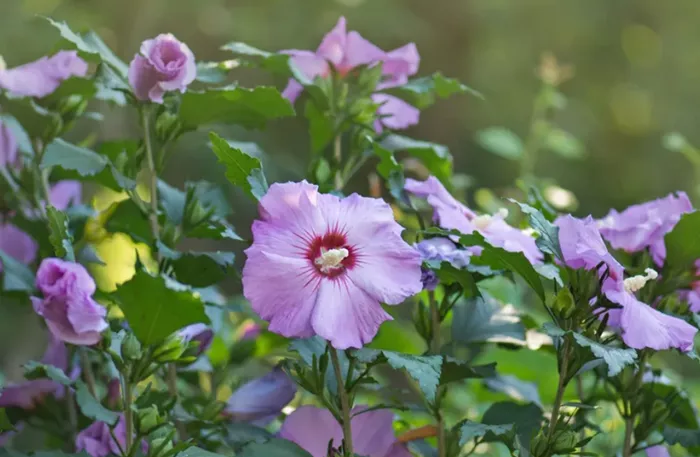If you love vibrant colors in your garden, you likely have hibiscus plants among your collection. Starting in early summer, hibiscus shrubs produce an abundance of tropical-looking flowers. With hundreds of varieties available, you can easily find one that suits your color preferences.
Hibiscus shrubs are relatively easy to grow. In mild regions, they can bloom until mid-fall, adding color to your garden until the first frost. However, it’s important to follow specific care guidelines as the seasons change.
Whether you have a hardy native hibiscus or a tender tropical variety, proper fall care is crucial for ensuring beautiful blooms next year. This guide covers everything you need to know about caring for hibiscus in the fall.
Pruning Hibiscus Shrubs
Hibiscus are among the best flowering shrubs, known for their striking blooms. To maximize their beauty, it’s important to understand how to care for them in the fall, even if they still have flowers.
1. Tidy and Prune Hibiscus Shrubs
Pruning is an essential task in the fall. While many plants need pruning in October and November, the timing for hibiscus depends on the variety you grow.
Tatiana Anderson, a plant expert and co-founder of Top Tropicals, explains, “Pruning differs based on the type of hibiscus. Proper pruning leads to bushier and fuller growth.”
For hardy hibiscus, like the swamp mallow (Hibiscus moscheutos), it’s best to prune after the leaves have fallen, typically following the first frost. You can cut back to three to five inches above the ground, as these plants will grow back quickly in spring.
In contrast, tropical hibiscus should not be pruned in fall. Instead, prune these plants in spring, after the risk of frost has passed. This way, you can enjoy their foliage a little longer.
When pruning, always use clean, sharp tools for the best results.
Protecting Tropical Hibiscus
Hardy hibiscus, such as swamp mallow, do not require winter protection. They can thrive in hardiness zone 5 and withstand winter temperatures as low as -20°F (-29°C).
However, tropical hibiscus, like Hibiscus rosa-sinensis, need protection from cold weather. If you have this type, fall is the time to prepare it for winter.
Tricia Hunt, a plant expert and owner of Millstone Nursery, advises, “Tropical varieties thrive in hardiness zones 9 to 11. If you’re in a cooler zone, move the plant indoors during the cold months.”
To protect tender hibiscus from frost, move container plants indoors when nighttime temperatures drop to 50°F (10°C). For those planted in the ground, cover them with frost protection materials to shield them from the cold. While this may not look ideal, frost sheets can be very effective.
Mulching Your Hibiscus
Mulching is another important task in the fall. Adding a layer of mulch helps protect the roots from cold temperatures. It also retains moisture, which is especially helpful for tropical varieties that require consistent watering.
Use high-quality mulch from your local garden store. Apply a thick layer of one to two inches around the base of each plant.
For potted hibiscus, gently loosen the top layer of soil before adding mulch. This creates space for the mulch to provide insulation and nutrients throughout fall and winter.
Conclusion
Caring for hibiscus in the fall is essential for ensuring a beautiful garden next year. By pruning, protecting, and mulching your plants, you can help them thrive through the colder months. Enjoy the vibrant colors of your hibiscus and prepare them for a successful growing season ahead.
Related topics:
- Desert Plants Also Suffer from Extreme Heat
- Plant Battles: Competing for Pollinators’ Attention
- Researchers Uncover How Plants Communicate with Fungi Through Soil


